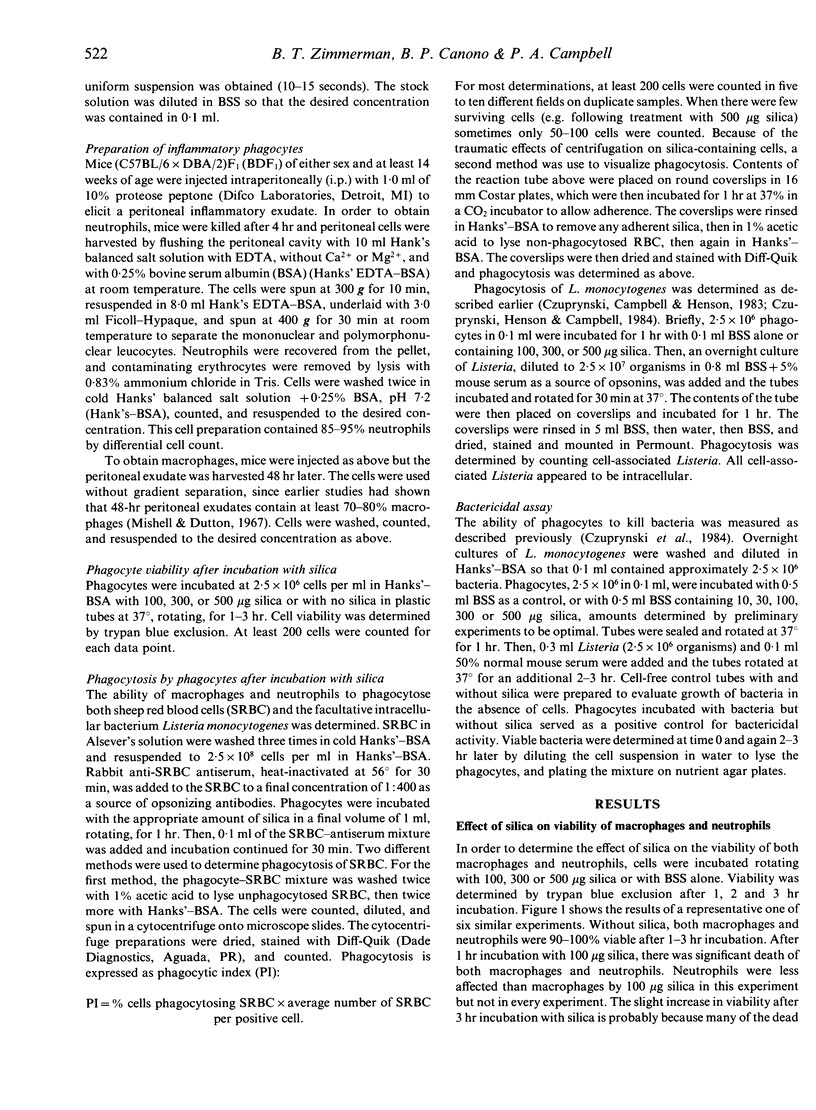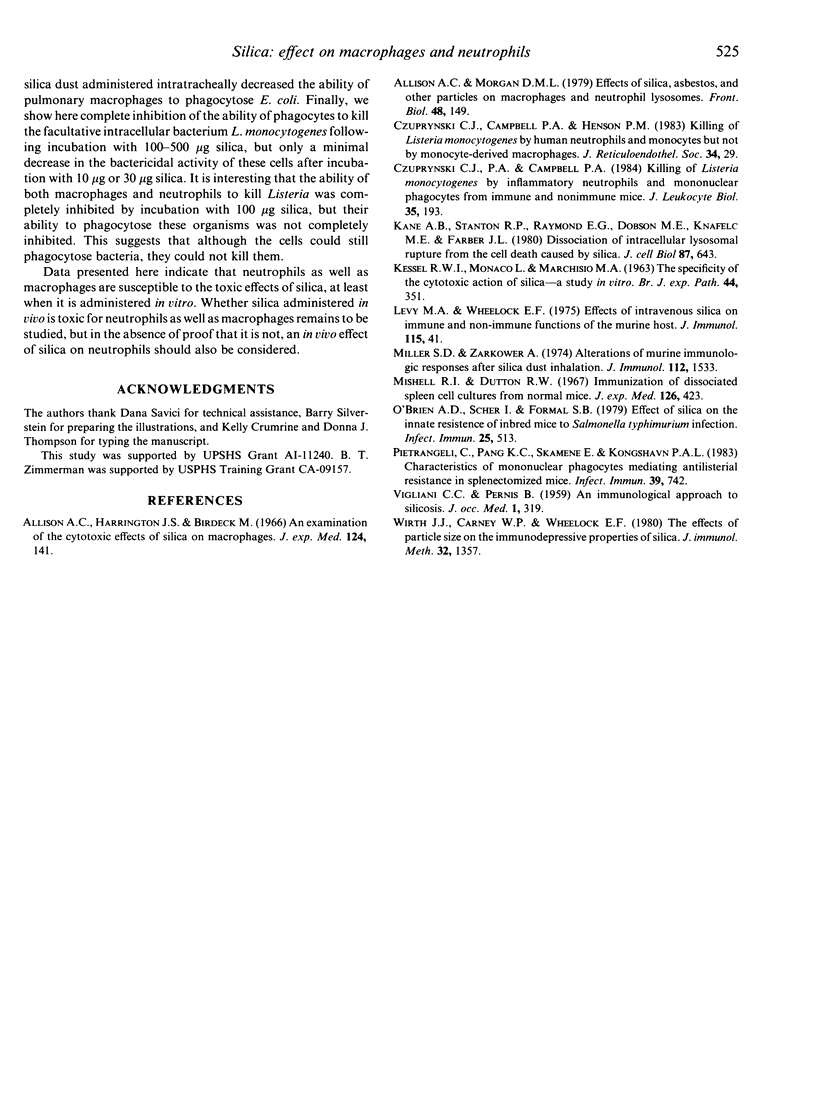Abstract
Silica, or silicon dioxide, has been shown to be toxic for macrophages. This is probably because it damages phagolysosomal membranes, allowing lysosomal enzymes to disrupt the cell. Neutrophils also take up particles such as silica and in addition they contain lysosomes. The purpose of this study was to determine whether incubation in vitro with silica inhibits function not only of mouse macrophages, but also of mouse neutrophils. The data show that incubation with silica for 1-3 hr decreases viability of both macrophages and neutrophils. Silica decreases the ability of macrophages and neutrophils to phagocytose both erythrocytes and bacteria, and it inhibits the ability of both cells populations to kill the facultative intracellular bacterium Listeria monocytogenes. Thus, it appears that silica, at least in vitro, is harmful to neutrophils as well as to macrophages.
Full text
PDF




Selected References
These references are in PubMed. This may not be the complete list of references from this article.
- Allison A. C., Harington J. S., Birbeck M. An examination of the cytotoxic effects of silica on macrophages. J Exp Med. 1966 Aug 1;124(2):141–154. doi: 10.1084/jem.124.2.141. [DOI] [PMC free article] [PubMed] [Google Scholar]
- Allison A. C., Morgan D. M. Effects of silica, asbestos, and other particles on macrophage and neutrophil lysosomes. Front Biol. 1979;48:149–159. [PubMed] [Google Scholar]
- Czuprynski C. J., Campbell P. A., Henson P. M. Killing of Listeria monocytogenes by human neutrophils and monocytes, but not by monocyte-derived macrophages. J Reticuloendothel Soc. 1983 Jul;34(1):29–44. [PubMed] [Google Scholar]
- Czuprynski C. J., Henson P. M., Campbell P. A. Killing of Listeria monocytogenes by inflammatory neutrophils and mononuclear phagocytes from immune and nonimmune mice. J Leukoc Biol. 1984 Feb;35(2):193–208. doi: 10.1002/jlb.35.2.193. [DOI] [PubMed] [Google Scholar]
- KESSEL R. W., MONACO L., MARCHISIO M. A. THE SPECIFICITY OF THE CYTOTOXIC ACTION OF SILICA--A STUDY IN VITRO. Br J Exp Pathol. 1963 Aug;44:351–364. [PMC free article] [PubMed] [Google Scholar]
- Kane A. B., Stanton R. P., Raymond E. G., Dobson M. E., Knafelc M. E., Farber J. L. Dissociation of intracellular lysosomal rupture from the cell death caused by silica. J Cell Biol. 1980 Dec;87(3 Pt 1):643–651. doi: 10.1083/jcb.87.3.643. [DOI] [PMC free article] [PubMed] [Google Scholar]
- Levy M. H., Wheelock E. F. Effects of intravenous silica on immune and non-immune functions of the murine host. J Immunol. 1975 Jul;115(1):41–48. [PubMed] [Google Scholar]
- Miller S. D., Zarkower A. Alterations of murine immunologic responses after silica dust inhalation. J Immunol. 1974 Nov;113(5):1533–1543. [PubMed] [Google Scholar]
- Mishell R. I., Dutton R. W. Immunization of dissociated spleen cell cultures from normal mice. J Exp Med. 1967 Sep 1;126(3):423–442. doi: 10.1084/jem.126.3.423. [DOI] [PMC free article] [PubMed] [Google Scholar]
- O'Brien A. D., Scher I., Formal S. B. Effect of silica on the innate resistance of inbred mice to Salmonella typhimurium infection. Infect Immun. 1979 Aug;25(2):513–520. doi: 10.1128/iai.25.2.513-520.1979. [DOI] [PMC free article] [PubMed] [Google Scholar]
- Pietrangeli C., Pang K. C., Skamene E., Kongshavn P. A. Characteristics of mononuclear phagocytes mediating antilisterial resistance in splenectomized mice. Infect Immun. 1983 Feb;39(2):742–749. doi: 10.1128/iai.39.2.742-749.1983. [DOI] [PMC free article] [PubMed] [Google Scholar]


